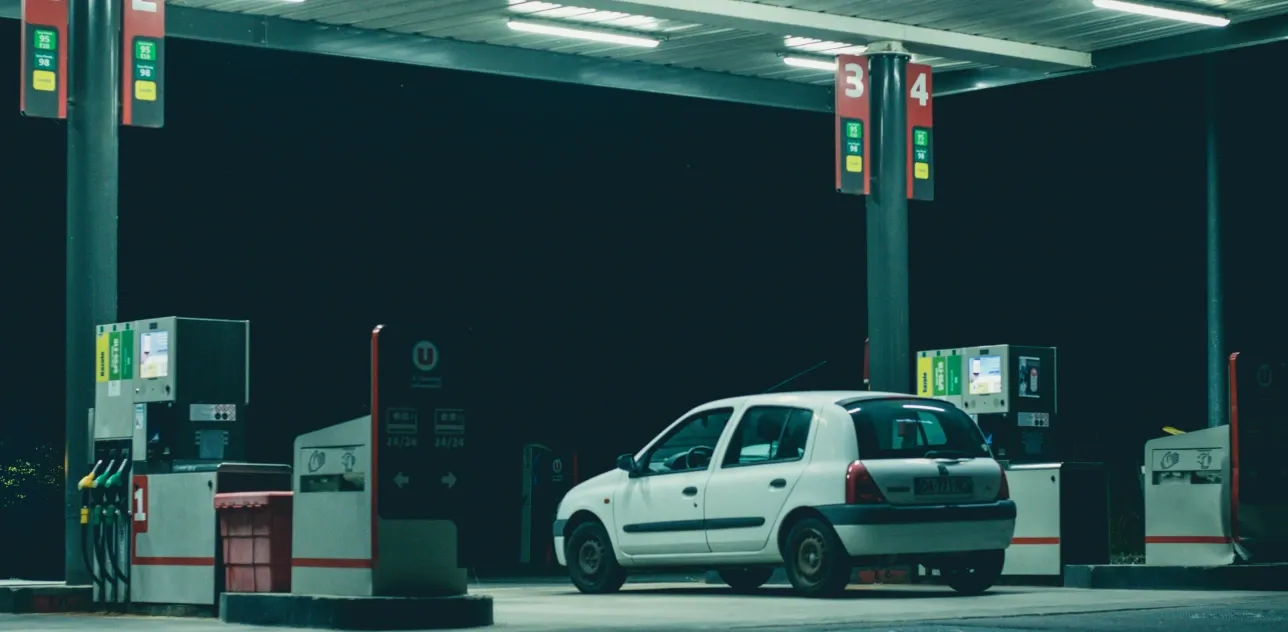How Random Walk's AI Solutions Reduced SOP Violations by 54% at a Fuel Station
INSIGHTS FROM

Jobit
Use Cases
AI Video Analytics
AI CCTV Monitoring
Edge Computing
Department
Health, Safety and Environment
Operations
Marketing
The Client Story
A leading provider of Fuel Retail Automation and Logistics & Transportation solutions, delivering innovative digital transformation through IoT, predictive analytics, and supply chain management across 32 countries. With 270+ experts, they support 45+ global customers, including Fortune 500 companies, in Oil & Gas, Telecom, Ports, Mining, and Logistics.
Key Results
40%
more efficient peak hour traffic management by identifying fueling bottlenecks.
67%
drop in dress code violations after one month.
54%
reduction in SOP violations in six months.
See what Random Walk can do for you

Key Challenges
Fuel stations operate in high-risk environments, requiring a focus on safety and operational efficiency. A solution was needed to improve performance, reduce the risk of accidents, and address several critical challenges. These challenges included:
- ● Monitoring SOP Adherence: Ensuring that all standard operating procedures (SOPs) were followed, especially in high-risk areas such as fuel dispensers and storage locations.
- ● Improving Operational Efficiency: Tracking how long vehicles spend in the fueling area and analyzing overall service efficiency to reduce wait times and optimize operations.
- ● Footfall Monitoring: Understanding traffic patterns and identifying peak times to allocate resources effectively and improve the customer experience.
- ● Detecting Illegal Parking and Trespassing: Monitoring restricted areas to detect unauthorized vehicles or individuals and prevent safety breaches.
- ● Verifying Customer Attendant Dress Code Compliance: Ensuring attendants adhered to uniform requirements, including caps and boots, to maintain professionalism and safety standards.
These challenges demanded continuous, real-time monitoring, which was difficult to manage manually. The solution needed to automate these processes and provide decision-makers with actionable insights through a centralized dashboard.
How We Solved It
By implementing a Visual AI solution, the fuel stations were able to automate the monitoring of critical activities and safety protocols. The approach involved custom-trained object detection models integrated with CCTV video feeds to log events in real-time. This system was designed to handle the following key use cases:
- ● SOP Adherence: Using object detection, the solution monitored key areas of the fuel station, ensuring compliance with SOPs such as preventing the sale of fuel in cylinders and verifying fire extinguisher placement. Each violation was logged and stored in a database for review.
- ● Efficiency Trend Analysis: By tracking the time vehicles spent in the fueling area, the system analyzed operational efficiency, providing insights into service times for different vehicle types (e.g., autos, cars). The results were displayed on a dashboard, helping management optimize fuel station operations.
- ● Footfall Analysis: The solution monitored the number of vehicles entering and exiting the station, tracking peak hours and vehicle types. This data was crucial for resource allocation and improving the customer experience.
- ● Illegal Parking & Trespasser Detection: Specific areas were designated as restricted zones, and the system continuously scanned for unauthorized vehicles or individuals. Detected violations triggered alerts and were logged for further action.
- ● Customer Attendant Dress Code: To maintain professionalism, the system checked if attendants were properly dressed in full uniforms, including caps and boots. Any deviation from the dress code was registered as a compliance issue.

Success Metrics
The introduction of this intelligent monitoring system transformed fuel station operations by automating processes that were once manual and labor-intensive. The fuel station management team was able to:
- ● Enhance Safety: Continuous monitoring of critical areas ensured strict adherence to safety protocols, reducing the risk of accidents and violations.
- ● Improve Operational Efficiency: The system provided valuable data on vehicle wait times, helping optimize service speed and resource allocation.
- ● Increase Security: By detecting illegal parking and unauthorized access in restricted zones, the solution helped mitigate potential safety risks.
- ● Streamline Compliance Monitoring: With automated checks for SOP adherence and dress code compliance, the system ensured that management had real-time visibility into daily operations, allowing for quick corrective action when needed.
Integrating visual AI into fuel station operations ensured safety and operational efficiency. The AI-powered system automated monitoring of SOP adherence, vehicle service times, footfall analysis, and security breaches, providing real-time insights. This solution helped safeguard personnel and the environment, and optimized resource management and customer experience, setting a new benchmark for modern fuel station management in the age of artificial intelligence.

Key Challenges
Fuel stations operate in high-risk environments, requiring a focus on safety and operational efficiency. A solution was needed to improve performance, reduce the risk of accidents, and address several critical challenges. These challenges included:
- ● Monitoring SOP Adherence: Ensuring that all standard operating procedures (SOPs) were followed, especially in high-risk areas such as fuel dispensers and storage locations.
- ● Improving Operational Efficiency: Tracking how long vehicles spend in the fueling area and analyzing overall service efficiency to reduce wait times and optimize operations.
- ● Footfall Monitoring: Understanding traffic patterns and identifying peak times to allocate resources effectively and improve the customer experience.
- ● Detecting Illegal Parking and Trespassing: Monitoring restricted areas to detect unauthorized vehicles or individuals and prevent safety breaches.
- ● Verifying Customer Attendant Dress Code Compliance: Ensuring attendants adhered to uniform requirements, including caps and boots, to maintain professionalism and safety standards.
These challenges demanded continuous, real-time monitoring, which was difficult to manage manually. The solution needed to automate these processes and provide decision-makers with actionable insights through a centralized dashboard.
How We Solved It
By implementing a Visual AI solution, the fuel stations were able to automate the monitoring of critical activities and safety protocols. The approach involved custom-trained object detection models integrated with CCTV video feeds to log events in real-time. This system was designed to handle the following key use cases:
- ● SOP Adherence: Using object detection, the solution monitored key areas of the fuel station, ensuring compliance with SOPs such as preventing the sale of fuel in cylinders and verifying fire extinguisher placement. Each violation was logged and stored in a database for review.
- ● Efficiency Trend Analysis: By tracking the time vehicles spent in the fueling area, the system analyzed operational efficiency, providing insights into service times for different vehicle types (e.g., autos, cars). The results were displayed on a dashboard, helping management optimize fuel station operations.
- ● Footfall Analysis: The solution monitored the number of vehicles entering and exiting the station, tracking peak hours and vehicle types. This data was crucial for resource allocation and improving the customer experience.
- ● Illegal Parking & Trespasser Detection: Specific areas were designated as restricted zones, and the system continuously scanned for unauthorized vehicles or individuals. Detected violations triggered alerts and were logged for further action.
- ● Customer Attendant Dress Code: To maintain professionalism, the system checked if attendants were properly dressed in full uniforms, including caps and boots. Any deviation from the dress code was registered as a compliance issue.

Success Metrics
The introduction of this intelligent monitoring system transformed fuel station operations by automating processes that were once manual and labor-intensive. The fuel station management team was able to:
- ● Enhance Safety: Continuous monitoring of critical areas ensured strict adherence to safety protocols, reducing the risk of accidents and violations.
- ● Improve Operational Efficiency: The system provided valuable data on vehicle wait times, helping optimize service speed and resource allocation.
- ● Increase Security: By detecting illegal parking and unauthorized access in restricted zones, the solution helped mitigate potential safety risks.
- ● Streamline Compliance Monitoring: With automated checks for SOP adherence and dress code compliance, the system ensured that management had real-time visibility into daily operations, allowing for quick corrective action when needed.
Integrating visual AI into fuel station operations ensured safety and operational efficiency. The AI-powered system automated monitoring of SOP adherence, vehicle service times, footfall analysis, and security breaches, providing real-time insights. This solution helped safeguard personnel and the environment, and optimized resource management and customer experience, setting a new benchmark for modern fuel station management in the age of artificial intelligence.
Key Results
40%
more efficient peak hour traffic management by identifying fueling bottlenecks.
67%
drop in dress code violations after one month.
54%
reduction in SOP violations in six months.
See what Random Walk can do for you

